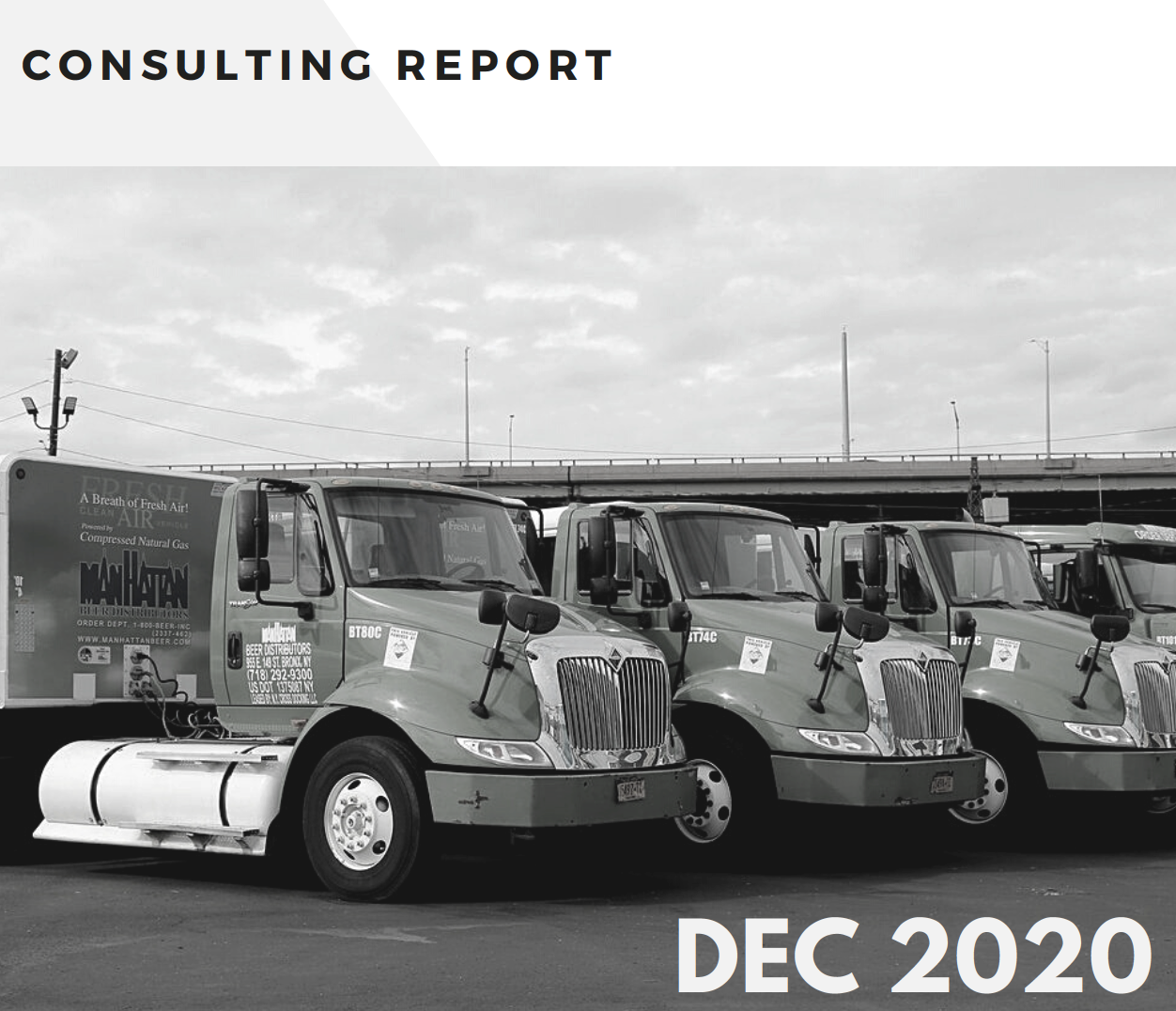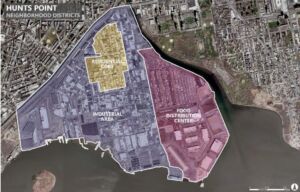CONSULTING REPORT
ELECTRIFYING FLEETS IN HUNTS POINT
This report identifies and suggests electrification pathways for medium and heavy-duty vehicles at the Hunts Point Food Distribution Center. This project was tasked with the express intent of identifying opportunities and blueprinting a framework to accelerate the electrification of the fleets operating out of the center. Our Goal was to understand the context of the neighborhood as it pertains to fleet electrification and to lay the groundwork for future projects to support further electrification in the neighborhood and the city.


Columbia University M.S. SUMA
The Sustainability Management (SUMA) program is taught by world-class sustainability practitioners and provides interdisciplinary training to candidates to advance their professional careers and become leaders in their fields.

ElectrifyNY
ElectrifyNY is a statewide coalition of advocates for environmental justice, public transportation, social justice, and good jobs fighting for a clean, equitable electric transportation future in New York.
ElectrifyNY (ENY) is a consortium of twelve NGOs and transportation associations in New York State (NYS) that advocate for environmental and social justice, public transportation, and equitable employment opportunities in the electric vehicle industry. ENY supports a transition to an electric transportation future in order to reduce fossil fuel usage and see improved environmental and public health outcomes.4
ENY requested a policy assessment and corresponding roadmap for electrifying medium- and heavy-duty vehicles, specifically in Hunts Point, Bronx, NY, which is home to the largest food distribution center in New York City.5 The high volume of diesel truck traffic through the distribution center and the surrounding neighborhood contributes to Hunts Point’s dangerously poor air quality when compared to the rest of New York City (NYC). By eliminating tailpipe emissions, electrification of trucks in Hunts Point is paramount to combat the health hazards associated with the air pollution that is adversely impacting Hunts Point residents and workforce. While all New Yorkers benefit from consuming the food generated by Hunts Point, only the residents there face the costs.
To consolidate the scope in order to accommodate the four-month project timeline, medium-duty diesel trucks were selected as the primary target, rather than heavy-duty trucks. Medium-duty trucks comprise most of the local traffic within Hunts Point, commute within the tri-state area, are driven by New Yorkers, and can be targeted with New York policies.6 Heavy-duty trucks, many of which are coming from across the country, are harder to reach by state policies. Not to mention, while neither medium- nor heavy-duty electric trucks have reached commercialized levels in U.S. markets, medium-duty trucks were understood through research to be more feasible to scale in the near future. With that in mind, existing policies for deploying medium-duty vehicles and charging infrastructure within New York State and nationally were evaluated for effectiveness and gaps.
Particular interest was paid to policies and programs instituted in food distribution centers and ports in other U.S. cities. Medium-duty electric vehicle technologies and available models were also researched. Most important, the Hunts Point neighborhood and Food Distribution Center
(FDC) was researched in depth to understand the operations and importance of electrifying trucks. Lastly, the foundation of our methodology was conducting robust outreach. Power mapping stakeholders ensured that no instrumental group affected or necessary for policy deployment was left out of this analysis. Receiving different viewpoints ensures that policies recommended here resonate with multiple stakeholders and fall within stakeholders’ power to pursue. This power mapping included Hunts Point Community-Based Organizations (CBO), Food Distribution Center Laborers, Electric Utility Companies, Electric Vehicle Companies, and City and State Level Sustainability and Energy Agencies.
As a basis for promoting medium- and heavy-duty truck policies for electrification it was calculated that if even 5% of outbound traffic is electrified (600 of the roughly 12,000 vehicles), this would reduce particulate matter 2.5 – a dangerous air pollutant – by 80kg per year. This, along with the abatement of other harmful emissions, would subsequently save $300,000 in avoided social costs, and would result in yearly fuel and operations and maintenance cost savings of $2.2 million across the fleets.
When approaching the electrification of Hunts Point, we recommend taking approaches that maximize the time and effort of ENY and have the greatest impact in driving progress. We recommend starting with expanding charging infrastructure as it would provide a solid foundation for electrification in NYC, and arguably the greatest impact in drawing electric trucks to Hunts Point. To that end, this report proposes 5 main recommendations to ENY which will be explained later in further detail. First, we recommend that ENY disseminate the tools prepared alongside this report to relevant stakeholders to increase general knowledge of the state of electrification in Hunts Point and some starting points for advocacy. Next, we recommend that ENY advocate for inclusion of medium and heavy duty vehicles in current policy that focuses more on light duty or personal vehicles. In addition to advocating the alteration of current policy, we recommend that new electrification policies come with their own sources of sustainable funding, to avoid the pitfalls of unfunded mandates, as well as making these policies easier to pass. Next, we recommend developing the workforce around Hunts Point to specialize in the operations and maintenance of electric vehicles, focusing particularly on equitably including members of the community in the energy transition. Finally, we recommend that ENY do what it does best, and reach out to its vast network of transportation alliances as well as relevant public agencies, private companies and prominent politicians. Electrification and de-carbonization are receiving more political attention and resources than ever before, and young progressive politicians are increasingly interested in environmental justice and ensuring that the equitable energy transition is ascendant and fair.
There is precedent for electric trucks at the Hunts Point Food Distribution Center, albeit a small and scattered offering. However, there is interest in expansion, given the social and monetary cost savings, the availability of refrigerated electric trucks that could scale in a primed market, and a fundamental need to improve the health and dignity of the community. Medium-duty truck electrification is possible in Hunts Point by adapting current New York State policies and developing related policies.




